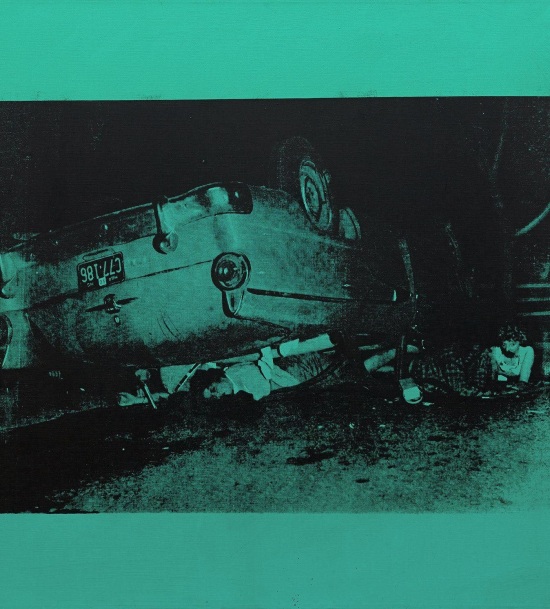Acquavella Galleries announces Painted Pop, an exhibition featuring painted works by key figures of the American Pop movement. The exhibition includes important works by featured artists including Rosalyn Drexler, Jasper Johns, Roy Lichtenstein, Claes Oldenburg & Coosje van Bruggen, Robert Rauschenberg, Larry Rivers, James Rosenquist, Ed Ruscha, George Segal, Marjorie Strider, Wayne Thiebaud, Andy Warhol, and Tom Wesselmann. Painted Pop is on view October 10–December 15, 2023 at Acquavella’s New York location.
Defined by its infusion of imagery from mass media and the American zeitgeist, Pop Art rose to prominence in America in the late 1950s and early 1960s. The period is documented for its innovative techniques and sensibilities that appealed to heightened interests of mechanical reproduction. However, despite the adoption of the visual language of mass culture and consumerism, from newspaper articles to magazine and billboard advertisements, Pop artists continued to foreground the medium of painting in their practices.
Gallery Director Michael Findlay states, “While shattering the norms of what was considered acceptable subject matter, these artists were skilled, academically trained painters with strong visual vocabularies that they extended by experimenting not only with novel techniques but also with newly marketed paint products such as Magna, Liquitex, and acrylic.”
The artists that would come to define Pop Art chose consistently to represent banal objects and figures; this included the constant inundation of imagery from the media, numbing viewers into the burgeoning consumerist era. Andy Warhol’s Death and Disasters series is emblematic of this. Borrowing photo-journalistic images of car crashes, electric chairs and suicides, Warhol utilized high-grain silkscreens—against an overlay of solid color—to navigate the anesthetizing effects of the media’s repetitive fixation on tragedy and violence. In Five Deaths on Turquoise (1963), a car crash of five teenagers is blown up and reproduced in Warhol’s characteristic style; an image Warhol would revisit 20 more times in 1963. The artist’s continuing interest and repetition of the subject matter became a method through which he explored transience and mortality, commenting on the public’s appetite for sensational news.
In Painted Pop, the exhibited works often co-opt the plasticity of mass-produced imagery, yet their process alludes to the artist’s physical intervention. In Warhol’s Coke Bottle (1962), thick black outlines produced by silkscreen hold an inky quality, seeping into the green acrylic ink upon the surface of the canvas. A blue ballpoint outline below the paint is unique to this object, indicating that the green paint was applied entirely by hand, without the guidance of a preliminary screen. While the painting refers to the cultural ubiquity of Coca-Cola, it conspicuously gestures to the individual experience of consumption. This contrast between individual versus collective and repetition versus singularity continued to interest artists well after Pop Art’s initial popularity.
Perhaps most characteristic of the style that arose to become “Pop Art” was the blurring of the lines between “high” and “low” art. Pop artists established a relatively groundbreaking concept that art could borrow from any source, whether that was Campbell’s soup cans, cartoons, or even Claude Monet’s Haystacks (1890–91), which was of particular interest to artist Roy Lichtenstein (1923–1997). In Lichtenstein’s Haystacks (1968 & 1969), the classic Monet series is represented as if produced by a printing press; Lichtenstein emulated the Ben-Day dots process of large-scale printing, constructing his images out of small, colored, hand-painted dots. Pop artists such as James Rosenquist and Lichtenstein sought to upend art history’s obsession with originality and enlightened subjects by replacing them with the ever growing consumerist and media dominated visual reality of mid-century America. Relishing this challenge, Lichtenstein’s crisp, stencil-like pictures formed a stark contrast with the unique painterly creations of his predecessors. The duality of Pop Art is represented here in an amalgamation of high and low, deconstructing previous hierarchies of culture.
8 East 79th Street
New York, NY 10075












